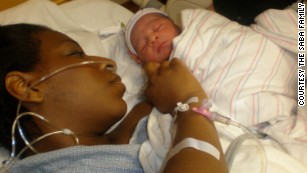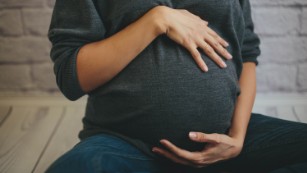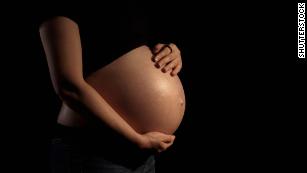(CNN)Women and their babies face health risks when there’s less than 12 months between the birth of one child and the conception of the next, according to a new study.
The researchers found a modest increase in risk of death or serious illness in the mother in intervals of less than 12 months and larger increases in the risk of adverse outcomes for the baby both before and after birth, as well as spontaneous preterm delivery.
Guidelines from the World Health Organization suggest that women wait at least two years before becoming pregnant again. The American College of Obstetricians and Gynecologists suggests that women should be advised to avoid interpregnancy periods of less than six months and “should be counseled on the risks and benefits of repeat pregnancy sooner than 18 months.”
The authors noted that the study found a shorter optimal interval between pregnancies than previously thought for all women. “The finding may be reassuring particularly for older women who must weigh the competing risks of increasing maternal age” with the risks of time between pregnancies, they wrote.
The study, published Monday in the journal JAMA Internal Medicine, included 123,122 women and 148,544 pregnancies, and it looked at how the health risks were applied to pregnant women of different ages. The participants were found using population health databases in Canada, which included all women who had at least two consecutive single pregnancies in a 10-year period.
For those 35 and over, the risk of maternal mortality and severe morbidity was 0.62% when there were only six months between the birth of one child and the conception of the next and 0.26% at 18 months. For mothers between 20 and 34, there was a predicted risk of 0.23% at six months and 0.25% at 18 months.
However, younger mothers had a higher risk of spontaneous preterm delivery with shorter interpregnancy intervals — 5.3% at six months and 3.2% at 18 months — and adverse fetal and infant outcomes — 2.0% predicted risk at six months, compared with 1.4% at 18 months — than older women.
This breakdown is relevant because the age at which American women are having their first child is increasing, due to changes in society and workplaces, according to the authors of an editorial published alongside the study.
“It’s a fairly common question that comes up now, because for people like me who see a lot of patients who are 40 having their first baby, the first question generally if we get through it unscathed is, ‘when can I have my next one?’ ” said Dr. Laura Riley, chair of obstetrics and gynecology at Weill Cornell Medicine and New York-Presbyterian, who was not involved with the research.
She said one of the strengths of the study is that it looked at the ages of women in relation to the risks, along with the size of the study population.
“My main takeaway is that this association between short interpregnancy interval and poor pregnancy outcome is well-known, but this shows that it’s for all maternal ages,” she said. “It doesn’t matter if you’re 20 or you’re 40.”
The authors of the study also attempted to account for other factors that could lead to poor pregnancy outcomes, such as whether the pregnancy was intended and whether the mother lived in a rural area.
The research considers possible health problems for both the mother and the baby, where previous data has been more focused on fetal health, according to Riley.
“They had maternal mortality and severe morbidity, which I think is another important piece of information, because a lot of times, people are focused on the baby, and they forget that there is some untoward maternal outcomes, as well,” she said.
Get CNN Health’s weekly newsletter
Sign up here to get The Results Are In with Dr. Sanjay Gupta every Tuesday from the CNN Health team.
Even though the risk of short interpregnancy intervals is present for all women, such short intervals will often be planned with older women, according to the editorial, due to their fertility and desired number of children.
“Clinicians should use patient-centered counseling and shared decision-making strategies that respect women’s desires for pregnancy, possibly at short intervals in women 35 years or older,” they said.
Although Riley tells mothers that it is ideal to wait a year before becoming pregnant again, she understands that age could play a part in a mother’s decision.
“I think the conversation needs to be that there is data to suggest that a short interpregnancy interval increases poor pregnancy outcomes, and so people will make decisions based on that information, but at least we can still have that discussion,” she said.



